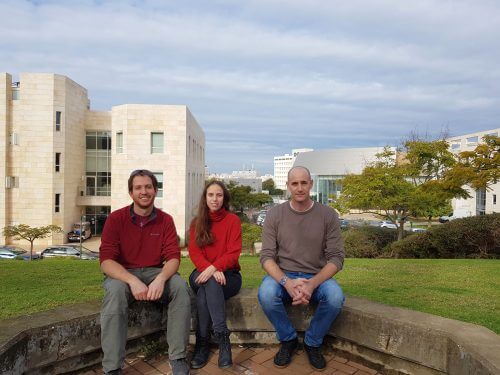The new method will make it possible to identify counterfeit drugs, explosives remotely and perform medical imaging tests with non-ionizing radiation. The results of the research were recently published in the journals NATURE COMMUNICATIONS and NANO LETTERS and will be presented at the beginning of February 2020 at the international optics conference PHOTONICS WEST to be held in San Francisco

A group of researchers from the Nano Electro-Optics Laboratory in the Department of Physical Electronics at Tel Aviv University, led by Prof. Tal Allenbogen, succeeded in developing a new method of generating and controlling Terahertz waves using nanometer materials. This groundbreaking research will enable the accelerated development of a wide variety of new and essential applications in the fields of medicine, technology, security, and other fields.
The research was conducted by Prof. Tal Allenbogen and the students Shai Keren-Zur and Mai Tal from Prof. Allenbogen's laboratory, in collaboration with Prof. Daniel Mittelman from Brown University in the USA and Dr. Sher-Lee Fleischer, a researcher at the School of Chemistry at Tel Aviv University .
The results of the research were recently published in the journals NATURE COMMUNICATIONS and NANO LETTERS and will be presented in early February 2020 at the international optics conference PHOTONICS WEST to be held in San Francisco.
Terahertz waves are electromagnetic waves with wavelengths shorter than microwaves and longer than infrared waves.
According to Prof. Tal Allenbogen, the scientific community has known for many years that electromagnetic waves in the terahertz field are of great importance due to their unique interaction with materials. For example, terahertz waves can be used to accurately identify different materials. In addition, terahertz waves can pass through materials and objects that appear opaque at other wavelengths, so they can be used to discover hidden objects and even their composition. But, despite the great importance of terahertz waves, the ability to produce and control these waves is very limited compared to other fields of radiation.
The new research makes use of nanoscale engineered surfaces, called metasurfaces, which enable unprecedented production and control of terahertz waves. These surfaces were produced at the Nano Center of Tel Aviv University, using advanced nanotechnology methods.
As part of the process, the researchers will create surfaces paved with gold nanometer antennas (a nanometer is equivalent to one billionth of a meter), which efficiently receive light from lasers with very short pulses in time, and in the process of energy conversion, transmit pulses of terahertz radiation instead. By controlling the antennas on top of the metasurface, the researchers showed that it is possible to shape the spatial and temporal shape of the terahertz pulse, which is generated in a way that is unattainable with existing means.
Prof. Allenbogen: "The demonstration we did in the laboratory is groundbreaking, because the use of nanometer materials and the ability to produce light from them in a controlled manner add important technological tools and new capabilities and take research in the field a big step forward."
According to him, "the ability to perfectly control the spatial form and other characteristics of the terahertz waves, as demonstrated in the study, enables the application and development of advanced imaging methods, new microscopy and spectroscopy." For example, it will be possible to identify remotely and without the use of chemical laboratory tests the composition of different materials and their spatial structure in a better way. It will be possible, for example, to easily identify fake drugs, as well as the identification of explosives.
Due to its great importance, the research was funded by the prestigious ERC (European Research Council) agency for research grants of the European Union. Also, the Ministry of Science and Technology participated in partial funding of the research.
Links to the research articles:

One response
A system that requires a pulsed laser source (probably, a femtosecond laser) will be so expensive that beyond exhausting and boring fabrication work there is nothing more to this research.